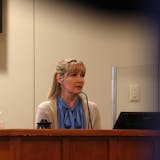A clearer look at charter schools The opening statement in your Nov. 29 editorial -- "a new report from the University of Minnesota Institute on Race and Poverty says that charter schools do more harm than good" -- is specious.
What the study really says is that, controlling for free and reduced price lunch status, kids in charter schools do worse than kids in conventional public schools, on standardized tests.
But can we really conclude anything from this study? Is free and reduced price lunch status enough to conclude that students who attend charter schools come from the same background as students who don't?
A better study was reported in Education Next. In that study, researchers followed poor kids who applied to three popular charter schools with waiting lists. They compared the kids who got into the charter schools with the kids who "lost" the lottery and had to go to their neighborhood public schools. In this truly randomized controlled study, the kids who attended the charter schools clearly outperformed the kids who went to their neighborhood schools.
Enrollment in charter schools has been growing at a rapid pace. Instead of paternalistically looking at standardized test scores, the Star Tribune might better ask what parents know that researchers don't.
KATHY ROGERS, MINNETONKA
Photo contradicted the headline Congratulations to the children of Harvest Prep Charter School in Minneapolis for meeting all state goals. The picture on your Nov. 26 front page was great but was mismatched with the headline "Charter schools fall short." You should have changed the headline or changed the picture. What were you thinking?
BRETT SMITH, MINNEAPOLIS



